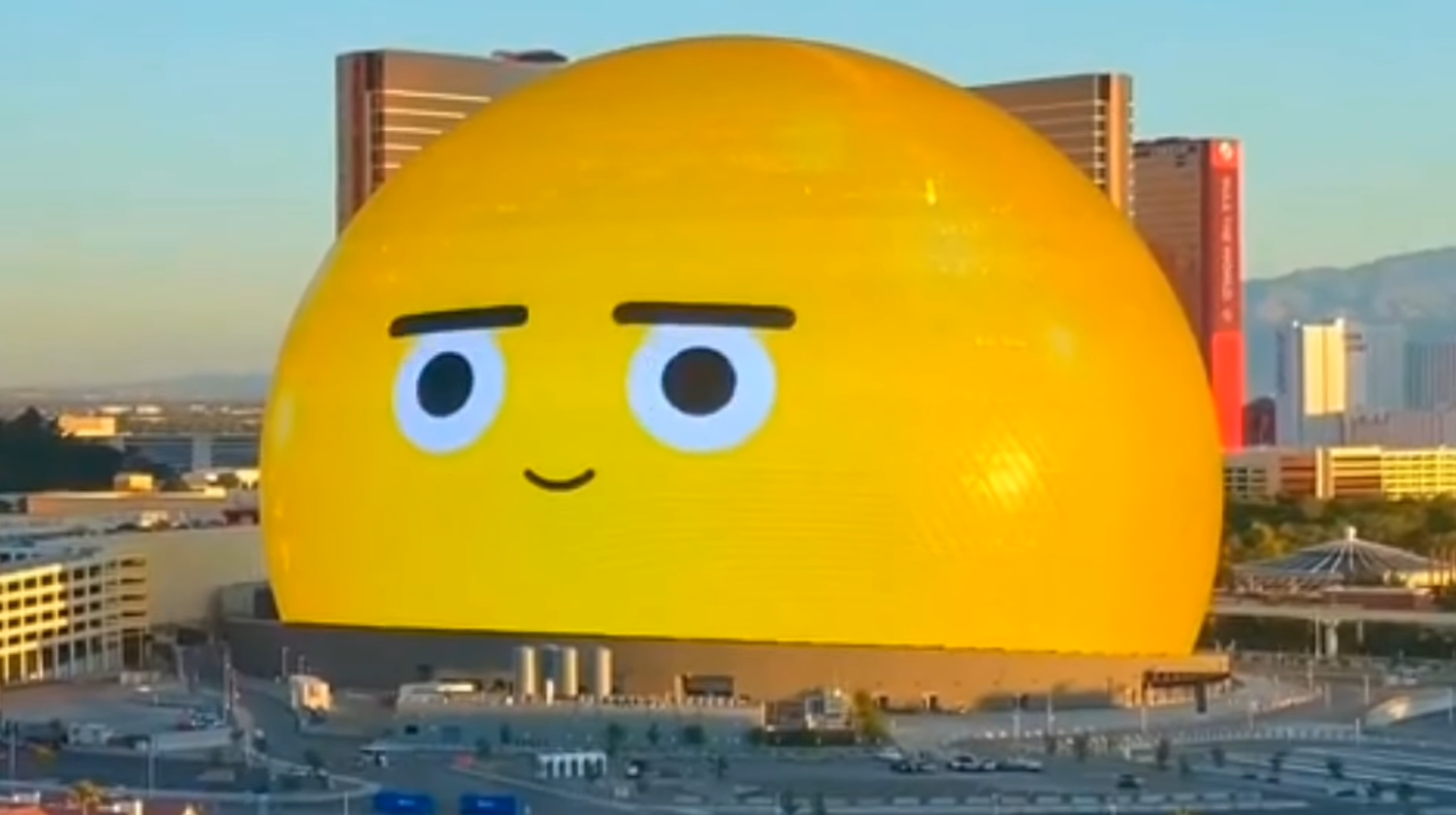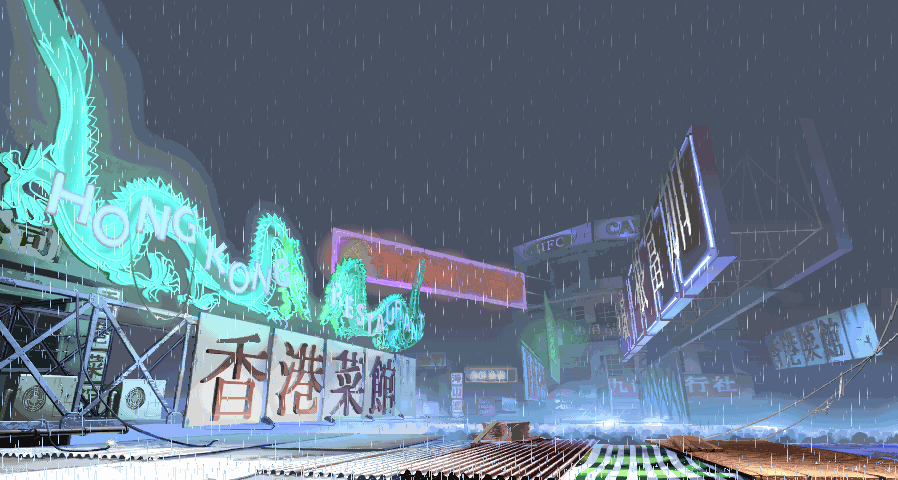by Tiffany Babb
The Sphere can’t be mistaken for any other structure near the Strip in the part of Paradise, Nevada that we call Las Vegas. For one, it’s huge, but it’s also round as a snow globe and glowing, standing apart from the Italian-inspired architecture of the nearby Venetian and the sleek skyscraper hotels that Vegas has favored in the past decades. To set it apart even more, the Sphere is a changing sight; its round LED-powered surface swapping out images (depending on the day and sponsor) from a large portfolio of skins including a grinning SpongeBob face, a looming human eye, and an ad for the Sphere itself.
The Sphere is certainly strange, both as a structure and as a concept. It has sparked a lot of public interest as the newest addition to the Las Vegas skyline and as a concert venue. Standing at 366 feet tall, 516 feet wide, the venue holds around 20,000 people and cost $2.3 billion to build (the most expensive entertainment venue ever built in Las Vegas, a town famous for extravagance). With its first year reporting a $98.4 million loss, it’s hard to see the Sphere as anything but another tech culture-driven folly. A poor attempt to jump onto the zeitgeist. An eyesore.
When I first saw the Sphere (which is technically not called “the Sphere,” but “Sphere,” though I don’t know of anyone who avoids the article), I dismissed it as Las Vegas' newest techy gimmick. It seemed in concert with the also-viral Van Gogh traveling exhibit that projected Starry Night onto walls for a “new” type of artistic enjoyment, more tailored to be photographed for social media than experienced. But then – perhaps because of the Las Vegas connection – I remembered a classic architectural text which makes the argument that you shouldn’t dismiss Las Vegas’ strange architecture. You should learn from it.

Denise Scott Brown, Robert Venturi, and Steven Izenour's 1972 book Learning From Las Vegas makes the case that there is much to learn from a city previously dismissed by architects as unworthy of study. As Brown and Venturi write in the preface to the book, “Withholding judgment may be used as a tool to make later judgment more sensitive. There is a way of learning from everything.” While other architecture students went to study Paris and Rome, Brown and Venturi took their students to study supermarket parking lots. They observed how, in chaotic cities like Las Vegas, signs and symbols dominated over space because of the need for fast communication. Visitors driving through town needed to know which buildings held lodgings at what price, which buildings sold food, and which buildings were casinos. Symbols reigned supreme – even in the actual design of a building.
In the text, the authors make the distinction between two types of buildings: the Duck and the Decorated Shed. “The Duck is the special building that is a symbol; the decorated shed is the conventional shelter that applies symbols.” The Duck had gotten its name from “The Big Duck,” an old duck-shaped building in New York state that sold duck eggs and meat. The building itself was the sign of what was within, as opposed to a building like the Stardust Casino, which featured a flashy sign that communicated what it was, and itself was not a sign, but a “decorated shed.” The Sphere is obviously, in this case, a duck. The Sphere is itself a decoration, a symbol. But a symbol of what?
Of spectacle, that’s for certain. When you drive past the Sphere, it’s hard to look away. But the Sphere also serves as a symbol of how we think about the screen. In its relatively short life (The Sphere opened in September 2023), the Sphere has become not only a part of the city’s iconography, but also representative of this era of culture where the screen is the thing.
Not only is this high-tech computerized billboard huge and round and glowing – you can go inside it. Because the billboard of the 2020s isn’t just a billboard — it’s a concert venue and theater, too, with the highest resolution LED screen in the world (according to Sphere Entertainment Co). With its cutting-edge screen and 167,000 loudspeakers that promise the ability to disperse sound evenly to each seat in the venue, The Sphere represents what a lot of people think is an evolutionary leap: technology's ability to make the digital seem as real as humanly possible.
In the Sphere’s atrium, five humanoid “Aura” robots (accompanied by "human lab technicians") greet guests and answer questions about directions and the technology behind the Sphere. The presence of the Aura robots — as well as the venue’s custom feature film, Darren Aronofsky’s Postcard to Earth, full of sweeping shots of the most beautiful views the world has to offer — seems to be arguing, “Look how far technology has come in replicating the real world.”
Gimmicks are gimmicks because they play to something we’re interested in, whether that’s a Wild West-themed restaurant or a walk down Disneyland’s Main Street. They provide a physical manifestation of an imagined world. The Sphere promises — with its wraparound screens and scent and wind and haptic technology — an outside, inside. A virtual world that is almost as real as (or even more real than) the real one, with nature in high definition and a robot that uses human-like body language.
But more than that, all of this technology promises a future that will make the digital bigger, more ambitious. A future in which technology gets better and better at recreating the natural world, so that it will possibly even surpass it someday… of course, that promise is built more on imagination and wonder at the new than a clear path forward. Those high tech Aura robots don't talk on their own (they need "trusted human lab technicians" to help them along), and if you sit in a bad seat, you get a warped image of that cutting edge LED screen. But whether or not those promises will be reached (and whether or not they're worth reaching) are irrelevant to the promise of the Sphere, that the Sphere is the space to interact with this specific dream of the future. That message is communicated, in the Sphere's marketing, yes, but mostly, simply, in its strange glowing presence that stands so much in contrast with the rest of the Las Vegas skyline.
Tiffany Babb is a critic and editor with work in Publisher's Weekly, The AV Club, and Paste Magazine. Read more of her work at www.tiffanybabb.com.



